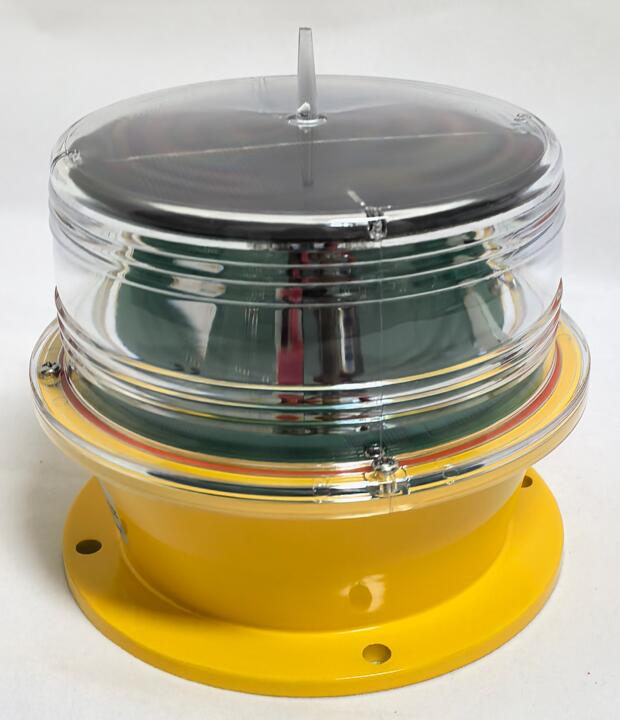Solar Aviation Light: The Future of Eco-Friendly Obstruction Lighting
As the aviation industry moves toward sustainable solutions, solar aviation lights have emerged as a game-changing technology for marking obstacles. These self-sufficient lighting systems combine renewable energy with advanced aviation safety requirements, offering reliable performance without grid dependency. Particularly valuable for remote locations and environmentally sensitive areas, solar aviation lights represent a perfect marriage of ecological responsibility and flight safety.
This article explores the working principles, advantages, applications, and technological innovations of solar aviation lights, demonstrating why they're becoming the preferred choice for modern obstruction lighting worldwide.
How Solar Aviation Lights Work
1. Core System Components
High-efficiency photovoltaic panels: Convert sunlight into electrical energy

Intelligent charge controllers: Regulate power flow and prevent overcharging
Deep-cycle batteries: Store energy for continuous nighttime operation
| solar aviation light |
LED light modules: Provide bright, aviation-compliant illumination
Light sensors: Automatically activate illumination at dusk
2. Operational Cycle
Daytime: Solar panels charge batteries while lights remain dormant
Twilight: Light sensors trigger illumination as daylight fades
Nighttime: Stored energy powers aviation lights throughout darkness
Dawn: System returns to charging mode automatically
Key Advantages Over Traditional Systems
1. Energy Independence
No electrical infrastructure required
Operational in remote locations (mountains, deserts, offshore)
Immune to power grid failures
2. Environmental Benefits
Zero carbon emissions during operation
Minimal ecological disturbance during installation
No underground cabling required
3. Cost Efficiency
Eliminates trenching and cabling expenses
No ongoing electricity costs
Reduced maintenance requirements
| solar aviation lights |
4. Installation Flexibility
Rapid deployment with minimal site preparation
Easily relocatable for temporary obstructions
Scalable for various structure heights
Applications in Aviation Safety
1. Permanent Structures
Communication towers in rural areas
Wind farms and renewable energy installations
Remote airport approach lighting
2. Temporary Obstructions
Construction cranes in urban environments
Offshore oil rigs and platforms
Disaster recovery operations
3. Specialized Installations
Mountainous terrain navigation aids
Wildlife refuge area lighting
Polar region aviation markers
Technological Innovations
1. Advanced Energy Management
Maximum Power Point Tracking (MPPT) technology
Lithium-ion battery storage solutions
Hybrid wind-solar systems for challenging climates
2. Smart Lighting Features
Automatic intensity adjustment based on visibility conditions
Remote monitoring via satellite or cellular networks
Theft prevention and tamper alerts
3. Durability Enhancements
Hurricane-resistant designs
Anti-icing systems for cold climates
Corrosion-proof materials for marine environments
Regulatory Compliance
1. International Standards
ICAO Annex 14 compliance for obstacle lighting
FAA AC 150/5345-43J specifications
IEC 60529 IP ratings for weather resistance
2. Certification Requirements
Photovoltaic performance certifications
Battery cycle life testing
Light output verification
3. Regional Adaptations
Tropical climate optimizations
Arctic condition modifications
Desert environment specializations
Implementation Considerations
1. Site Assessment Factors
Solar irradiance levels
Obstruction shadow analysis
Wildlife interference potential
2. Maintenance Protocols
Panel cleaning schedules
Battery health monitoring
Component inspection routines
3. Performance Optimization
Panel angle adjustments seasonally
Energy consumption balancing
Backup system integration
Future Development Trends
1. Increased Efficiency
Perovskite solar cell integration
Quantum dot technology
Multi-junction photovoltaic panels
2. Enhanced Connectivity
5G-enabled performance monitoring
AI-powered predictive maintenance
Integration with air traffic management systems
3. Sustainable Materials
Recyclable component designs
Bio-based composite materials
Reduced rare earth element usage
Solar aviation lights have transformed obstruction lighting by providing a sustainable, reliable, and cost-effective solution that meets stringent aviation safety requirements. As solar technology continues to advance and the aviation industry places greater emphasis on environmental responsibility, these systems are poised to become the global standard for obstacle illumination.
From remote mountain peaks to bustling urban construction sites, solar aviation lights deliver consistent performance while reducing ecological impact. Their ability to operate independently of infrastructure makes them particularly valuable for developing regions and emergency situations. As we look toward a future of greener aviation, solar aviation lights stand out as a shining example of how renewable energy can enhance flight safety while protecting our planet.
